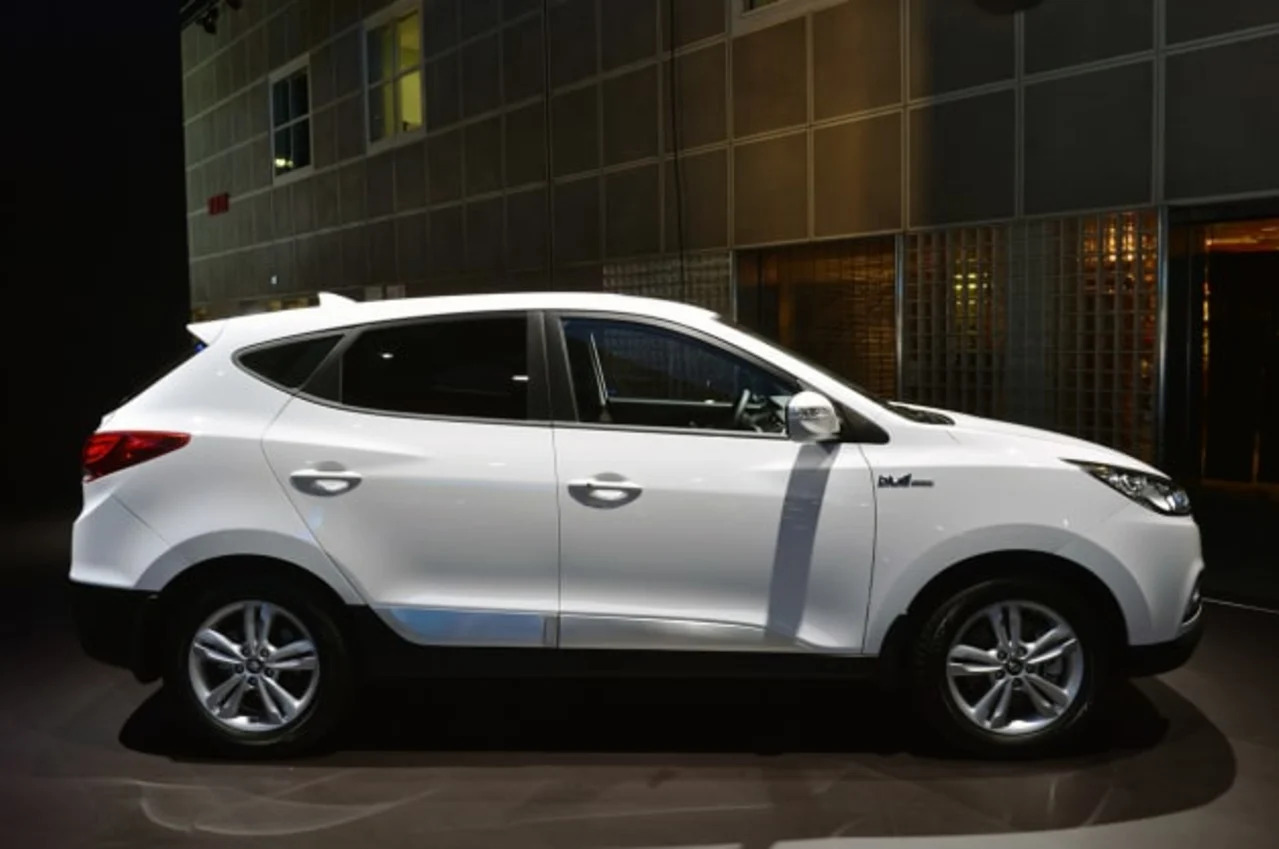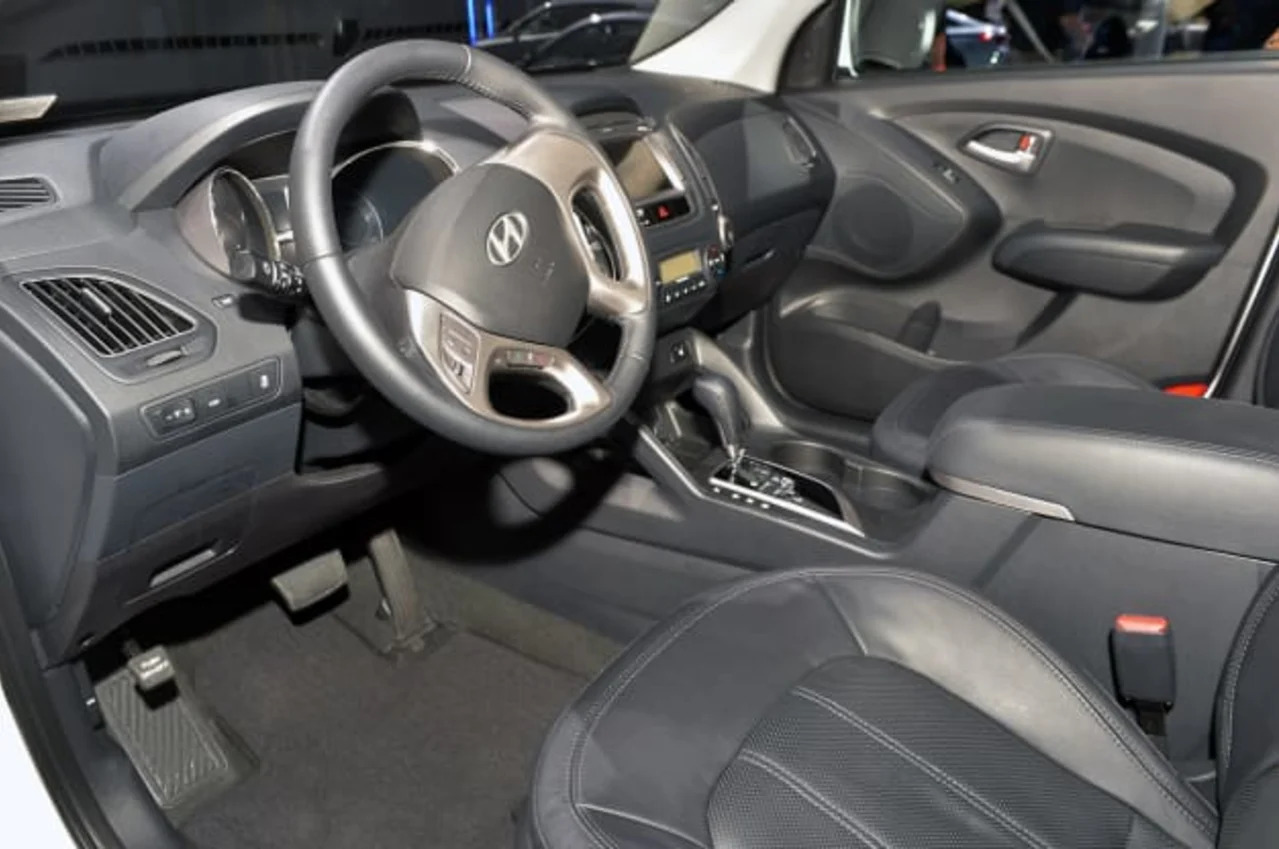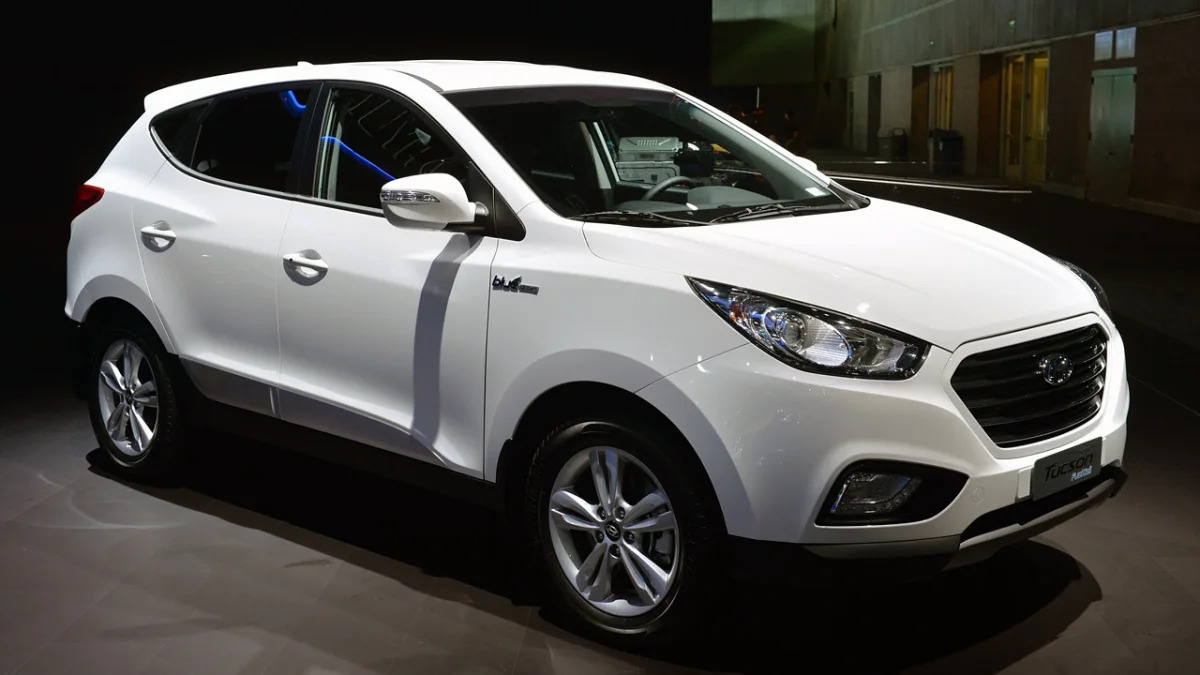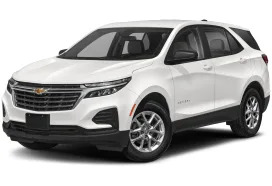They say you can always tell the pioneers. They're the ones with the arrows in their backs. Unfortunately, that was our experience pursuing – and eventually rejecting – the new hydrogen fuel cell-powered Hyundai Tucson.
I first heard about Hyundai's new hydrogen fuel cell vehicle (FCV) at the Los Angeles Auto Show in November 2013. As a tech buff, the thought of driving a new, clean technology vehicle sounded exciting. Best of all, Hyundai was wrapping the new vehicle in a smart, familiar package, as a loaded current-generation Tucson SUV. The FCV Tucson was billed as $499 a month with $2,999 down, with free fuel and free maintenance. Our family needed a new, small, fuel efficient SUV, so I signed up for information on the upcoming lease program.
Nonetheless, I was ready to try jumping the hurdles and get an alternative fuel car. A low impact on the environment, plus free fuel and a solo car pool lane sticker? What could go wrong?

My wife was a much harder nut to crack. My habit of jokingly calling it a "nuclear-powered" car probably didn't help much either. Our conversations went like this:
My wife and I aren't necessarily "early adopters," but we were among the first ten customers in California for the Ford Fusion Hybrid in 2009, a car that has proved to be a popular hybrid. Moving to an alternative fuel vehicle would also be a good example to our idealistic 15-year old son, who was about to become a driver. He liked the idea of a zero emissions car whose fuel potentially won't hurt the environment as much as the petroleum extraction and refining process.
We had briefly considered full electric, but the Southern California version of range anxiety (will my battery die on the freeway on a 100 degree day far from an exit?) quickly took care of that. A Tesla, with its 250 mile range, would have been nice, but we didn't have an extra $80,000 to spare. We also seriously considered plug-in hybrids, like the Chevrolet Volt, Toyota Prius Plug In or the Ford Fusion and C-Max.

The FCV version of the Hyundai Tucson is no "stripper." The car comes with leather seats, a navigation system and the chance to ride solo in California's coveted car pool lanes. To further sweeten the deal, Hyundai is offering free hydrogen fuel for the life of the lease (3 years, 36,000 miles) for the aforementioned price of $2,999 down, $499 a month for 36 months. So what was the pioneering part? An FCV is basically an electrical vehicle. But instead of charging it each night, you fuel the fuel cell (think of it as a battery) with hydrogen. It's another approach to creating a low-emissions, high mileage vehicle, like electric, hybrid, CNG (compressed natural gas), "clean diesel", etc.
The problem was a lack of hydrogen filling stations. A helpful map provided by the California Fuel Cell Partnership listed 59 hydrogen stations. However, only nine were actually open. Another 48 were "in development," to be built over the next three years with funding from California taxpayers, to help break the "chicken or the egg" logjam.
In the summer of 2014, only four stations were open within 30 miles of our house. There were only about seven open in all of Los Angeles and Orange Counties, which together contain 19 million people. No such stations existed in Ventura or San Diego Counties "yet" as the hydrogen proponents like to say. There were no interchange stations in areas like Fresno, that would allow FCVs from LA to fuel up for the trip to San Francisco, or vice-versa. Even driving to Las Vegas, just 275 miles or a single tankful away for most of today's gasoline cars, was still in the realm of science fiction, with no hydrogen stations along the route.
Nonetheless, pioneering this green technology seemed exciting. It was cool, too – literally. On an FCV test drive, we stopped at a hydrogen filling station. The nozzle made electronic contact with the fuel port on the Tucson, and my hand grew icy on a summer day. The gas is stored at ice-cold temperatures.

The car is appointed like a high-end Tucson. White with a dark interior, it's packed with creature comforts like heated leather seats, navigation, and a nice sound system. I took the car for two test drives, the second with my wife driving, at the nearest participating dealership, an inconvenient 30 miles from our home. Still, we agreed it was a nice vehicle and got our credit approved. We planned to pick it up the next week.
When we returned, however, the deal blew up like a hydrogen-filled zeppelin. The dealer told us what Hyundai hadn't made clear – that the way the lease was written, our actual cost would be $572 a month including tax and other costs. This added another $2500 to the vehicle's cost over three years. (Someone in the dealership actually used, not kidding here, the expression "bait and switch"). We felt we were being punished for trying to help the environment and test a new technology. A frequent criticism of hybrid, electric, plug in and other alternative fuel vehicles (and the taxpayer subsidies applied to them) is that they are marketed and sold to rich people.
Indeed, $500 a month would definitely get us a luxury car. A local BMW dealer offered a new 2014 BMW 528i Sedan with navigation, heated seats, a premium package and concierge service for $4,500 down, $435 a month, almost $1,000 less than the FCV Tucson over three years. If we wanted something more directly comparable to the Tucson, a small SUV, we could have leased a BMW X1 with navigation, for $228 a month and $4,900 down – a savings of around $9,000 over the course of the lease.
The Tucson FCV is an experimental vehicle. The program directors told us that all kinds of sensors would be monitoring its performance at all times. As an experimental vehicle, the car company could charge beta testers like us a reasonable price, in return for the known limitations of the new technology, including limited fueling stations, limited range, and added time and aggravation.
Yes, there are mitigating factors. The Hyundai program did offer free fuel, although fueling would have cost at least an hour each week. But when the additional $70 a month in costs was finally presented, on top of all the compromises we'd have to make, we walked away. It's not acceptable for a consumer to feel penalized for testing a new technology, or worse, feel like he's subsidizing a giant industrial conglomerate. As I told one of the program's managers, "This program seems to be set up for rich people" with infinite time. It's too bad. I was looking forward to being a pioneer. I wasn't afraid to put up with a few arrows, but some are just too expensive.
Ultimately, our problem with Hyundai's Tucson FCV was not a technology issue, but one of value. We perceived that we would be paying more per month than we ever had for a car, but getting far less usability. So instead, we decided to buy a Subaru CrossTrek Hybrid. We negotiated a price including tax of just over $30,000, including leather heated seats, navigation and a sunroof. We put $6,000 down and took advantage of Subaru's zero percent financing. Paying $512 a month, we'll own the car in four years. The car's 30 miles per gallon fuel economy, high ground clearance and all-wheel drive came in handy on our vacation to California's high Sierras. Sadly, that 350-mile journey is one the Tucson FCV can't make. At least, not yet.
UPDATE: Hyundai wanted to make it clear that the official lease information does include mention of the added costs. Here is the text of that fine print (emphasis added):
$499 per month for 36 months including fuel and maintenance. $2,999 due at lease signing. No security deposit required. Excludes taxes, title, license and options. LIMITED NUMBER OF 2015 MODEL YEAR TUCSON FUEL CELL VEHICLES AVAILABLE SPRING 2014 AT SELECT SOUTHERN CALIFORNIA HYUNDAI DEALERS. QUALIFIED CUSTOMERS MUST RESIDE WITHIN A SPECIFIC ZIP CODE. Excludes taxes, title, license and options. No security deposit required. Lessee responsible for excess wear and mileage at over 12,000 miles/year at rate to be determined once lease offer becomes available. No purchase option at lease end. Lessee responsible for insurance. Hydrogen fuel is included in the lease (subject to change) and provided by a third party. At Your Service Valet Maintenance included during lease term. Includes 3-year/36,000-mile Complimentary Maintenance applicable only for first originating vehicle lessee. Free maintenance only available in the U.S. Tucson closed end lease offered through Hyundai Motor Finance (HMF) and subject to credit approval through select dealers. Well-qualified lessees only. Dealer price may vary. See authorized Hyundai dealer for details.
==
Michael Goldstein is an automotive and general interest journalist who has written for the Los Angeles Times, LA Weekly, OC Weekly, NY Daily News, Car & Driver and many others. His article Blood Money was named best Investigative story in the 2013 Southern California Journalism Awards.
I first heard about Hyundai's new hydrogen fuel cell vehicle (FCV) at the Los Angeles Auto Show in November 2013. As a tech buff, the thought of driving a new, clean technology vehicle sounded exciting. Best of all, Hyundai was wrapping the new vehicle in a smart, familiar package, as a loaded current-generation Tucson SUV. The FCV Tucson was billed as $499 a month with $2,999 down, with free fuel and free maintenance. Our family needed a new, small, fuel efficient SUV, so I signed up for information on the upcoming lease program.
In the spring of 2014, I learned more at a Clean Fuel Symposium, held on the Queen Mary in Long Beach. The panel was packed with experts on alternative fuel vehicles. One spokesperson outlined the chicken or egg problem with alternative fuels like hydrogen: fuels first or vehicles? Another said something that I should have heard more clearly. "If the argument [to move to alternative fuel vehicles] has to start with a change of behavior from consumers, that's a hard row to hoe." I would soon to learn what an FCV would really cost, both in hours and in dollars.Someone has to go first. Why not us?
Nonetheless, I was ready to try jumping the hurdles and get an alternative fuel car. A low impact on the environment, plus free fuel and a solo car pool lane sticker? What could go wrong?

My wife was a much harder nut to crack. My habit of jokingly calling it a "nuclear-powered" car probably didn't help much either. Our conversations went like this:
It turned out the nearest hydrogen station was in Burbank, about 13 miles from our house. In LA traffic, that could be more than half an hour's drive each way. Since there's an excellent bakery in Burbank (Porto's), I told my wife I was fine with taking the time each week to fuel up every 200 miles or so."A what kind of car?"
"Hydrogen fuel cell."
"What?"
"It's essentially an electric car."
"Don't those things have a really short range?"
"Yes. That's what the hydrogen is for. You fill it with hydrogen to fill the fuel cell, instead of charging it overnight like an electric car."
"Where do you get hydrogen?"
"Well..."
My wife and I aren't necessarily "early adopters," but we were among the first ten customers in California for the Ford Fusion Hybrid in 2009, a car that has proved to be a popular hybrid. Moving to an alternative fuel vehicle would also be a good example to our idealistic 15-year old son, who was about to become a driver. He liked the idea of a zero emissions car whose fuel potentially won't hurt the environment as much as the petroleum extraction and refining process.
We had briefly considered full electric, but the Southern California version of range anxiety (will my battery die on the freeway on a 100 degree day far from an exit?) quickly took care of that. A Tesla, with its 250 mile range, would have been nice, but we didn't have an extra $80,000 to spare. We also seriously considered plug-in hybrids, like the Chevrolet Volt, Toyota Prius Plug In or the Ford Fusion and C-Max.
These cars offer the alluring promise of 90 miles plus per gallon equivalent, based on a mix of gas and electric driving. However, few true plug-in hybrid SUVs are available. Most of what's available are conventional sedans, like the Volt or the Fusion. In the end, my wife (the sensible one) nixed either an electric or plug in hybrid vehicle. Based on previous issues with our 50-year old home electrical system and equally ancient garage, she feared that adding a high-speed charger might well result in disaster. Although it did demand some compromises, Hyundai offered a vehicle that seemed to meet our real world needs. And we'd definitely be first on the block with a hydrogen car. Someone has to go first. Why not us?Hyundai offered a vehicle that seemed to meet our real world needs.

The FCV version of the Hyundai Tucson is no "stripper." The car comes with leather seats, a navigation system and the chance to ride solo in California's coveted car pool lanes. To further sweeten the deal, Hyundai is offering free hydrogen fuel for the life of the lease (3 years, 36,000 miles) for the aforementioned price of $2,999 down, $499 a month for 36 months. So what was the pioneering part? An FCV is basically an electrical vehicle. But instead of charging it each night, you fuel the fuel cell (think of it as a battery) with hydrogen. It's another approach to creating a low-emissions, high mileage vehicle, like electric, hybrid, CNG (compressed natural gas), "clean diesel", etc.
Hyundai originally said the Tucson FCV had a range of 300 miles. They later backtracked and said 265 miles was more realistic. Either way, we weren't going to be driving the Tucson from Los Angeles to its namesake city in Arizona. In fact, during the timeframe of the three-year lease, my travel would pretty much be restricted to Los Angeles, Ventura and Orange Counties, with Santa Barbara (100 miles from my home) and San Diego (120 miles) as stretch goals.We weren't going to be driving the Tucson from Los Angeles to its namesake city in Arizona
The problem was a lack of hydrogen filling stations. A helpful map provided by the California Fuel Cell Partnership listed 59 hydrogen stations. However, only nine were actually open. Another 48 were "in development," to be built over the next three years with funding from California taxpayers, to help break the "chicken or the egg" logjam.
In the summer of 2014, only four stations were open within 30 miles of our house. There were only about seven open in all of Los Angeles and Orange Counties, which together contain 19 million people. No such stations existed in Ventura or San Diego Counties "yet" as the hydrogen proponents like to say. There were no interchange stations in areas like Fresno, that would allow FCVs from LA to fuel up for the trip to San Francisco, or vice-versa. Even driving to Las Vegas, just 275 miles or a single tankful away for most of today's gasoline cars, was still in the realm of science fiction, with no hydrogen stations along the route.
Nonetheless, pioneering this green technology seemed exciting. It was cool, too – literally. On an FCV test drive, we stopped at a hydrogen filling station. The nozzle made electronic contact with the fuel port on the Tucson, and my hand grew icy on a summer day. The gas is stored at ice-cold temperatures.

The car is appointed like a high-end Tucson. White with a dark interior, it's packed with creature comforts like heated leather seats, navigation, and a nice sound system. I took the car for two test drives, the second with my wife driving, at the nearest participating dealership, an inconvenient 30 miles from our home. Still, we agreed it was a nice vehicle and got our credit approved. We planned to pick it up the next week.
When we returned, however, the deal blew up like a hydrogen-filled zeppelin. The dealer told us what Hyundai hadn't made clear – that the way the lease was written, our actual cost would be $572 a month including tax and other costs. This added another $2500 to the vehicle's cost over three years. (Someone in the dealership actually used, not kidding here, the expression "bait and switch"). We felt we were being punished for trying to help the environment and test a new technology. A frequent criticism of hybrid, electric, plug in and other alternative fuel vehicles (and the taxpayer subsidies applied to them) is that they are marketed and sold to rich people.
Indeed, $500 a month would definitely get us a luxury car. A local BMW dealer offered a new 2014 BMW 528i Sedan with navigation, heated seats, a premium package and concierge service for $4,500 down, $435 a month, almost $1,000 less than the FCV Tucson over three years. If we wanted something more directly comparable to the Tucson, a small SUV, we could have leased a BMW X1 with navigation, for $228 a month and $4,900 down – a savings of around $9,000 over the course of the lease.
The Tucson FCV is an experimental vehicle. The program directors told us that all kinds of sensors would be monitoring its performance at all times. As an experimental vehicle, the car company could charge beta testers like us a reasonable price, in return for the known limitations of the new technology, including limited fueling stations, limited range, and added time and aggravation.
Instead, Hyundai stuck an arbitrary $50,000 price tag on a vehicle no one would be allowed to buy. According to AOL Autos, the MSRP of the similar 2015 Hyundai Tucson Limited Front Wheel Drive is $26,300, for an out-the-door price of around $30,000. If you got the entry-level Tucson, which starts at $21,500, you could get two Tucsons for the price of one FCV. With a 15.3-gallon tank and 21/28 EPA mpg rating (2014 model) the standard Tucson should have a range of about 360 miles. That's more than enough to go from LA's San Fernando Valley to San Francisco or Las Vegas, on fuel you can get on any street corner.If you got the entry-level Tucson, you could get two for the price of one FCV.
Yes, there are mitigating factors. The Hyundai program did offer free fuel, although fueling would have cost at least an hour each week. But when the additional $70 a month in costs was finally presented, on top of all the compromises we'd have to make, we walked away. It's not acceptable for a consumer to feel penalized for testing a new technology, or worse, feel like he's subsidizing a giant industrial conglomerate. As I told one of the program's managers, "This program seems to be set up for rich people" with infinite time. It's too bad. I was looking forward to being a pioneer. I wasn't afraid to put up with a few arrows, but some are just too expensive.
Ultimately, our problem with Hyundai's Tucson FCV was not a technology issue, but one of value. We perceived that we would be paying more per month than we ever had for a car, but getting far less usability. So instead, we decided to buy a Subaru CrossTrek Hybrid. We negotiated a price including tax of just over $30,000, including leather heated seats, navigation and a sunroof. We put $6,000 down and took advantage of Subaru's zero percent financing. Paying $512 a month, we'll own the car in four years. The car's 30 miles per gallon fuel economy, high ground clearance and all-wheel drive came in handy on our vacation to California's high Sierras. Sadly, that 350-mile journey is one the Tucson FCV can't make. At least, not yet.
UPDATE: Hyundai wanted to make it clear that the official lease information does include mention of the added costs. Here is the text of that fine print (emphasis added):
$499 per month for 36 months including fuel and maintenance. $2,999 due at lease signing. No security deposit required. Excludes taxes, title, license and options. LIMITED NUMBER OF 2015 MODEL YEAR TUCSON FUEL CELL VEHICLES AVAILABLE SPRING 2014 AT SELECT SOUTHERN CALIFORNIA HYUNDAI DEALERS. QUALIFIED CUSTOMERS MUST RESIDE WITHIN A SPECIFIC ZIP CODE. Excludes taxes, title, license and options. No security deposit required. Lessee responsible for excess wear and mileage at over 12,000 miles/year at rate to be determined once lease offer becomes available. No purchase option at lease end. Lessee responsible for insurance. Hydrogen fuel is included in the lease (subject to change) and provided by a third party. At Your Service Valet Maintenance included during lease term. Includes 3-year/36,000-mile Complimentary Maintenance applicable only for first originating vehicle lessee. Free maintenance only available in the U.S. Tucson closed end lease offered through Hyundai Motor Finance (HMF) and subject to credit approval through select dealers. Well-qualified lessees only. Dealer price may vary. See authorized Hyundai dealer for details.
==
Michael Goldstein is an automotive and general interest journalist who has written for the Los Angeles Times, LA Weekly, OC Weekly, NY Daily News, Car & Driver and many others. His article Blood Money was named best Investigative story in the 2013 Southern California Journalism Awards.













Sign in to post
Please sign in to leave a comment.
Continue